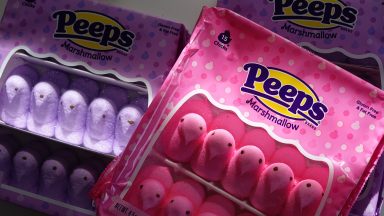
Red food coloring is found in many of the products we enjoy and love, but not all of them are safe for consumption, like Red No. 3.
Find out more about this synthetic dye, its health effects, and alternative dye options below.
What Is Red No. 3?
Red No. 3, also known as Erythrosine, is a synthetic red dye commonly used in food, cosmetics, and pharmaceuticals. It is derived from coal tar, an oil-based substance, and has been used for decades to add a vibrant red color to products like candies, baked goods, and even certain medications.
What Are the Harmful Effects of Red No. 3?
Some of the harmful effects linked to Red No. 3 include:
- Cancer Risk: In animal studies, Red No. 3 has been shown to cause cancer, particularly thyroid tumors, leading to its restriction in certain products. Although the FDA has deemed it safe in small amounts, ongoing research has raised concerns about its long-term use.
- Hormonal Disruption: Some studies suggest that Red No. 3 could interfere with hormone levels, particularly thyroid function. It may disrupt the normal functioning of the thyroid gland, which regulates metabolism, growth, and development.
- Allergic Reactions: Like many synthetic dyes, Red No. 3 can cause allergic reactions in sensitive individuals, including rashes, hives, and asthma-like symptoms.
In 1990, the FDA banned Red No. 3 from cosmetics and topical drugs under the Delaney Clause, after studies showed that the chemical was carcinogenic at high doses in lab rats.
Robert F. Kennedy Jr., President-elect Donald Trump‘s pick for health secretary, has publicly claimed that food dyes, including Red No. 3, could contribute to cancer.
What Other Red Food Dyes Are There?
All color additives used in food sold in the U.S. must be approved by the FDA. Currently, there are 36 FDA-approved color additives, including nine synthetic dyes.
In addition to Red No. 3, several other red food dyes are commonly used in food products. Some of the most well-known red dyes include:
- Red 40 (Allura Red AC) – One of the most widely used red food dyes, found in items like candies, soft drinks, and snacks. It is synthetic and derived from petroleum.
- Carmine (Cochineal Extract) – A natural red dye made from the cochineal insect. It is commonly used in foods, beverages, and cosmetics, though it can be a concern for those with allergies.
- Red 2 (Amaranth) – A synthetic red dye used in the past but now banned in the U.S. due to health concerns. It was used in some candies and beverages.
- Beet Juice Powder – A natural alternative to synthetic red dyes, this powder is made from beets and is used in organic or “natural” food products.




